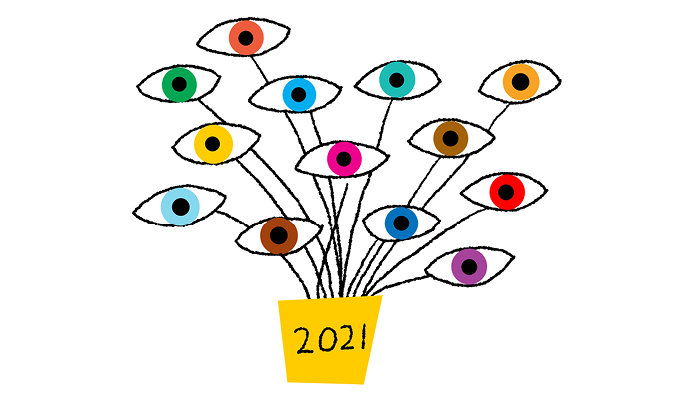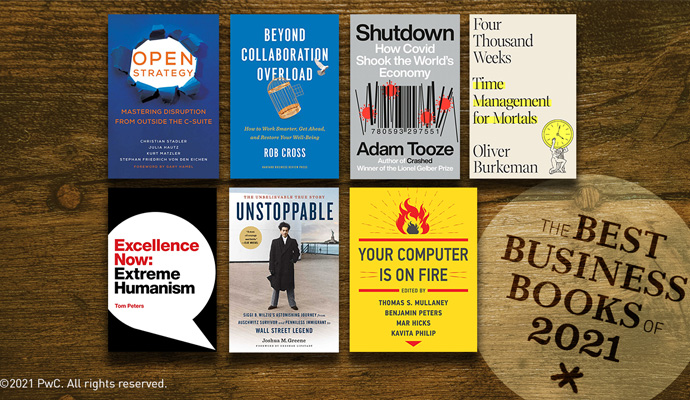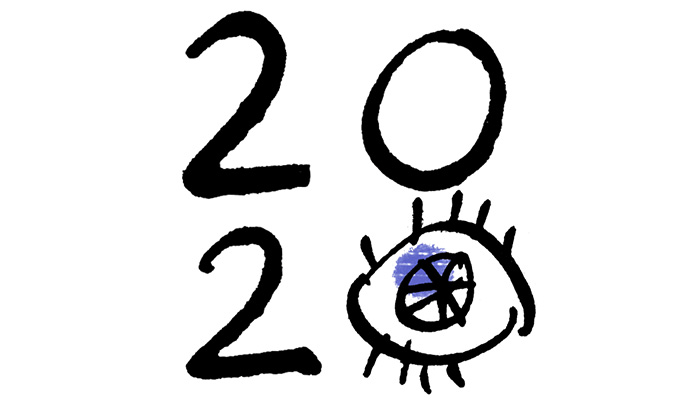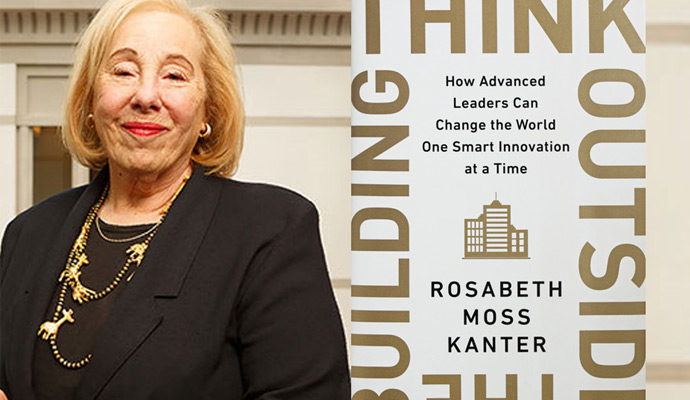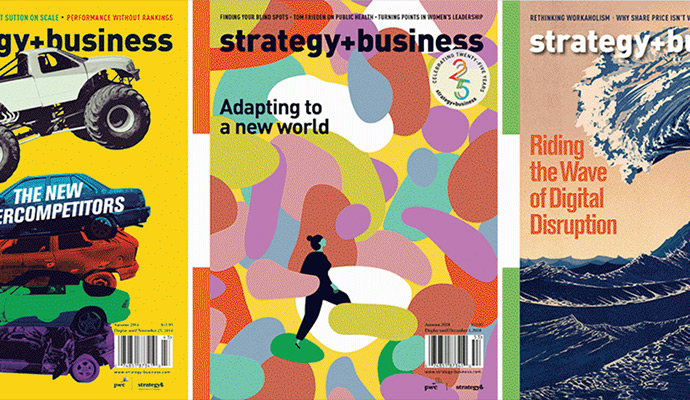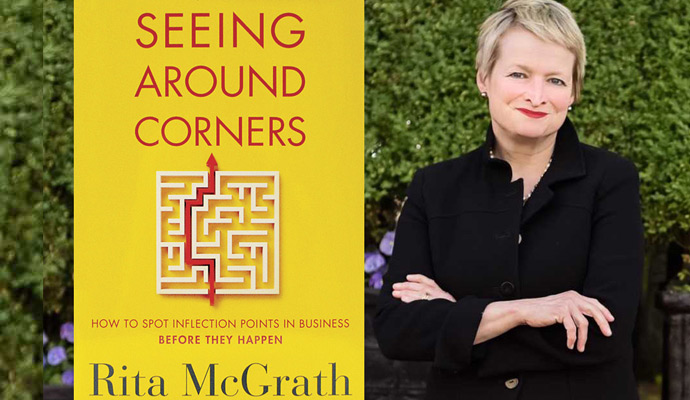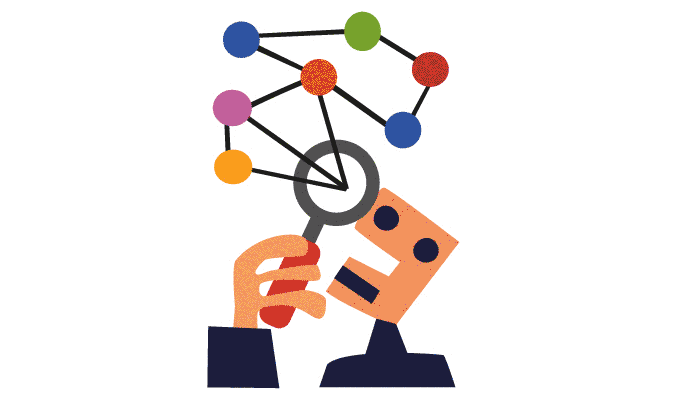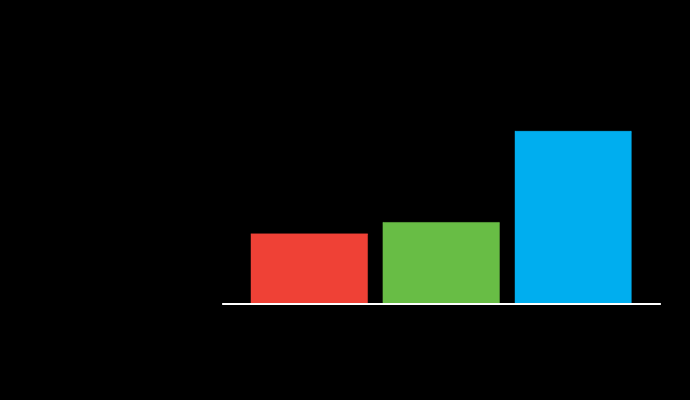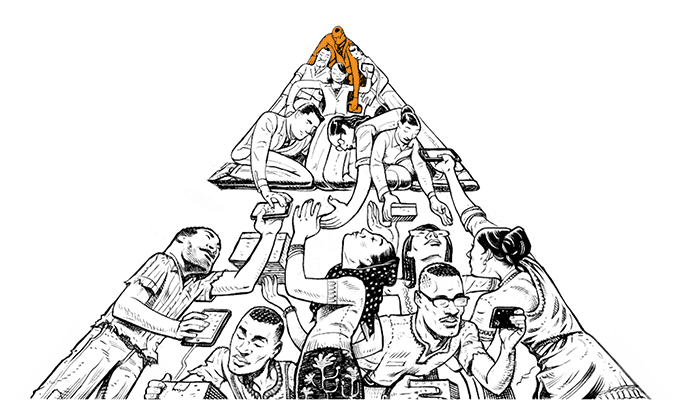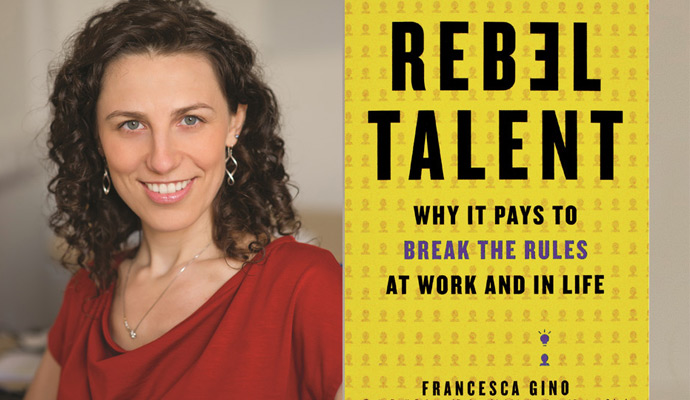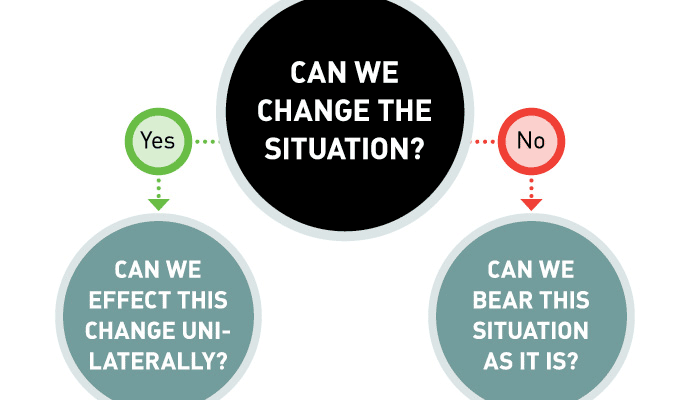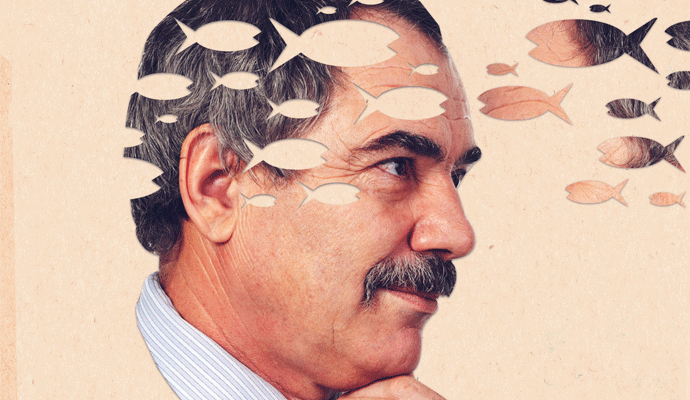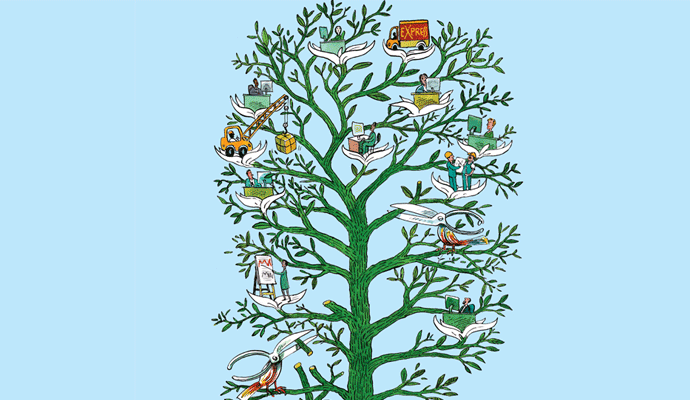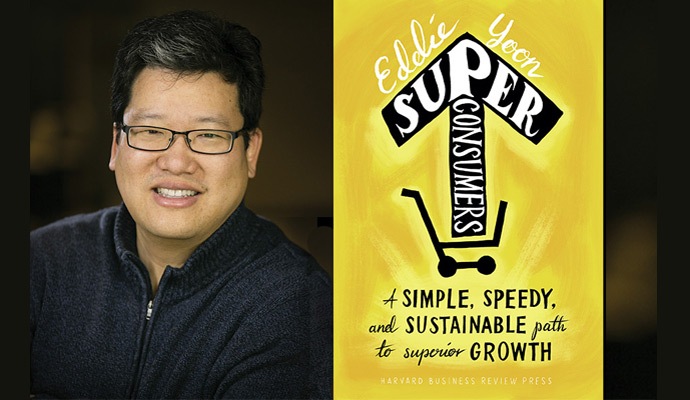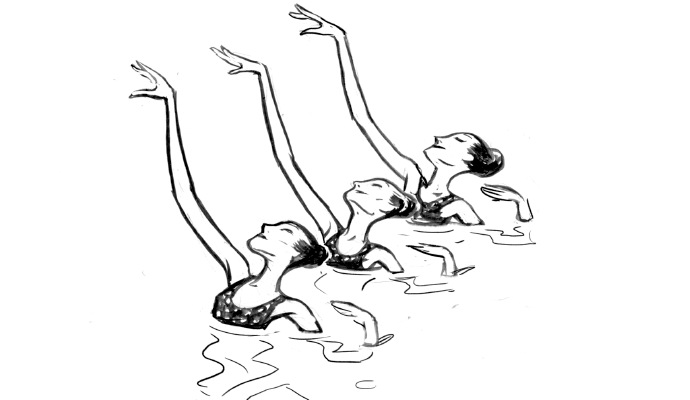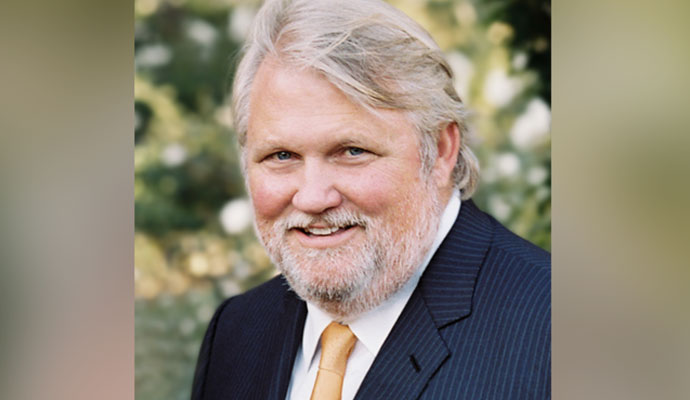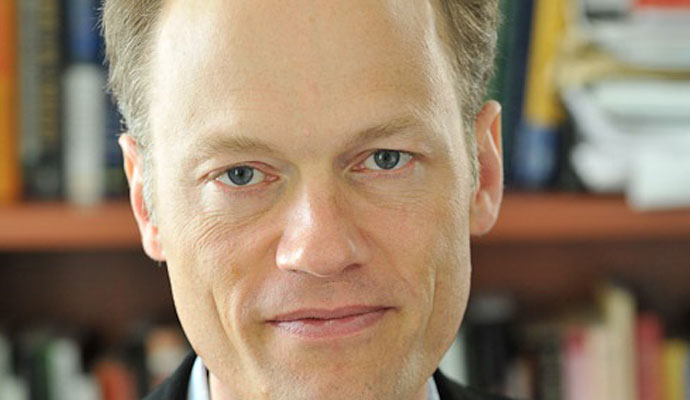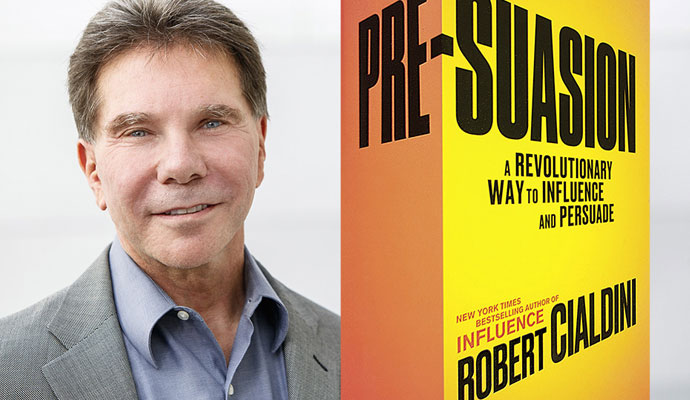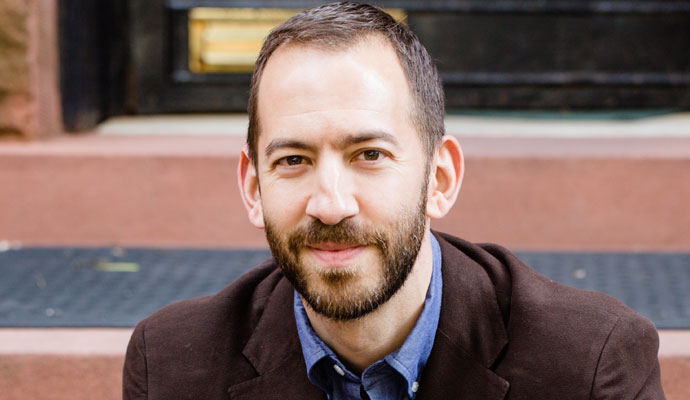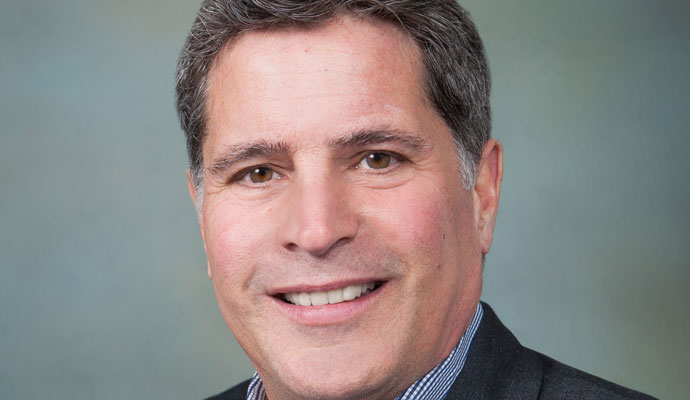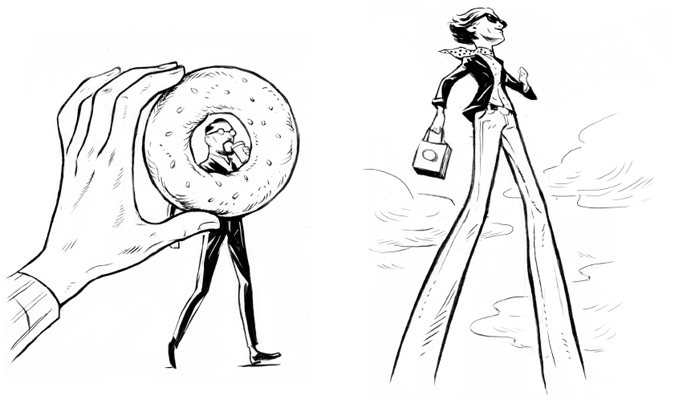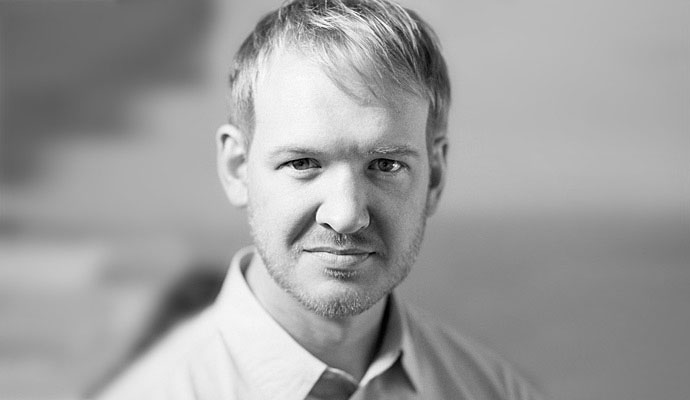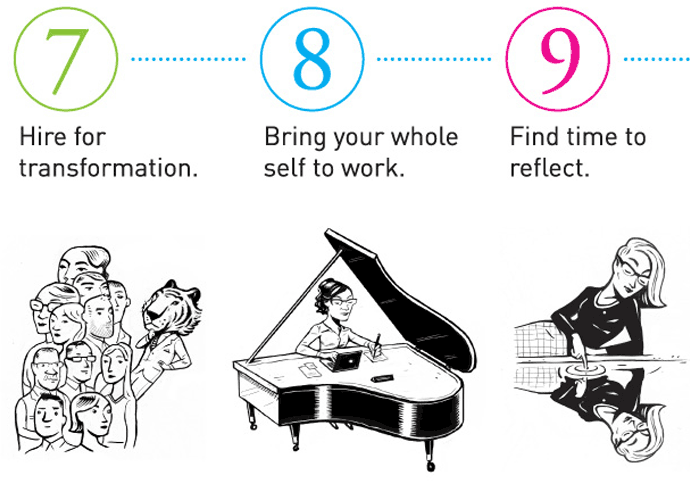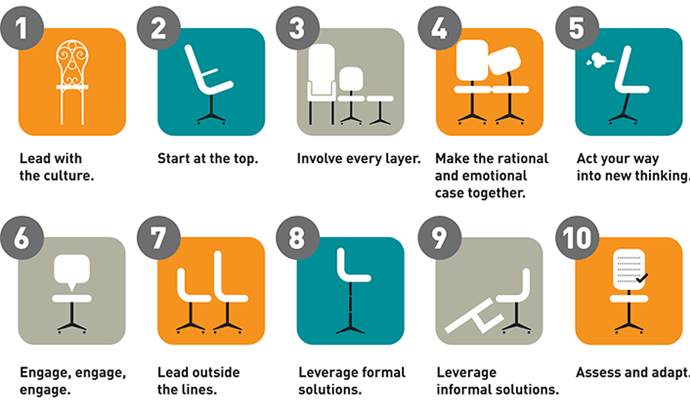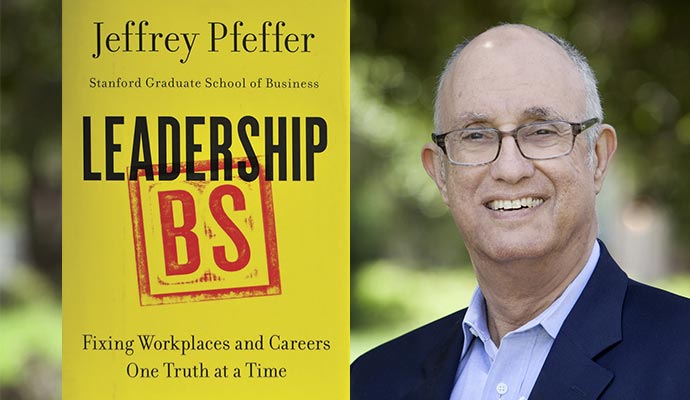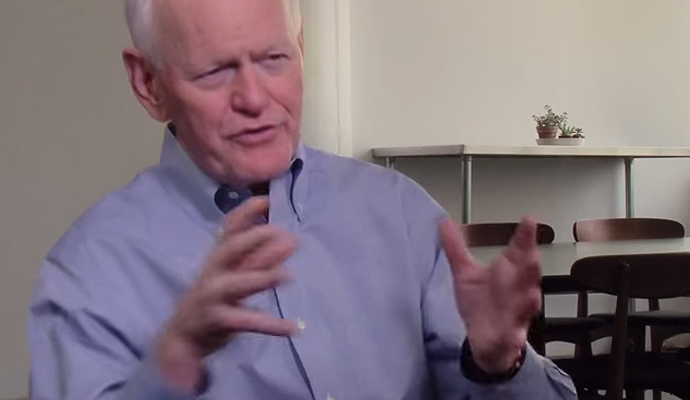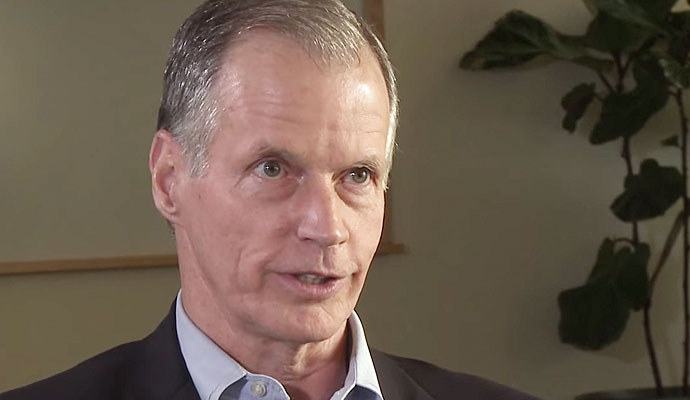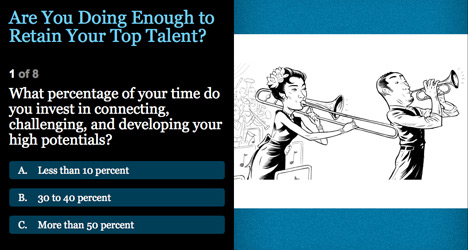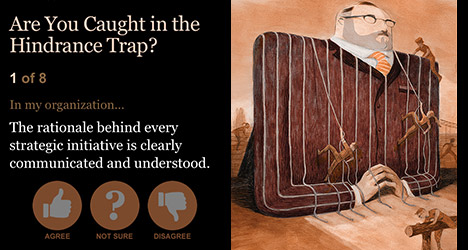s+b Videos and more
Shaping better meetings, the ESG revolution, and a guide to value creation are among our most popular articles this year.
Best Business Books 2021
Writers at strategy+business choose the best reads of the year in seven categories.
GMO
The 10 most read s+b articles of 2020
Running a company in a pandemic-impacted world, the trouble with “managers,” and more of the most read stories this year.
Top shelf picks: Best Business Books 2020
Writers at strategy+business pick the year’s best books in seven categories.
Interactive
Favorite s+b covers, 1995–2020
The magazine’s longtime art director chooses 15 memorable covers from our first 25 years.
InfographicGMO
The six elements of transforming information into insight
How to build a world-class data and insights capability in the post–COVID-19 world.
Interactive
The s+b crossword
Get ready to put your knowledge of all things business to the test with a puzzle celebrating our 25th anniversary.
Three tips for reinventing your employee experience
Applying design thinking principles will enable a quick bottom-up reform, with changes driven by a deep understanding of your people.
GMO
Six tips for optimizing your B2B relationships in the time of COVID-19
B2B companies can use the COVID-19 crisis as an opportunity to reevalute what clients and stakeholders need, and accelerate products and services that will better serve them.
GMO
Six tips for making the digital customer experience more human in the time of COVID-19
How do you keep — and deepen — your vital connection to consumers at this most critical time? Here are six practices to guide you.
InteractiveGMO
Five perspectives on succeeding in uncertainty
For businesses battling the COVID-19 crisis, it may be hard to envision what the world is going to look like in the future. What is clear is that uncertainty will remain constant. These insights from five CEOs on how they manage in uncertain times — which were published before the pandemic — are a reminder that resilience and agility are important drivers of success, whatever the economic and business environment.
InteractiveGMO
10 CEO perspectives on upskilling
Two years’ of interviews with CEOs from around the world reveal how leaders view the effect of technology on their workforces. For more insight, see PwC’s 23rd Annual Global CEO Survey.
What you read: The 10 most popular s+b articles of 2019
How to think like a CEO, handing off the baton after a long tenure, and more of the most read stories this year.
How to be an outstanding leader
We look at how executives and those on their way to leadership roles can navigate today’s complicated business landscape.
Infographic
A guide to establishing your leadership presence
Express your own commitment as a leader in a more effective way. For further insights, read “10 principles for leadership.”
GMO
The digital approach to organizational effectiveness
How leaders can use digital twin technology to optimize their company’s health. For more insights, see www.pwc.com/digitaltwin.
Top shelf picks: Best Business Books 2019
Writers at strategy+business pick the year’s best books in seven categories.
InfographicGMO
A guide to workforce transformation
How to raise the skills of your employees so that they can move successfully into the future. For further insights, read “10 principles of workforce transformation.”
Interactive
Diagnose your risk of unforced errors
Create an early warning system to avoid self-sabotaging behaviors. For further insight, read “Develop a personal early warning system to avoid making bad leadership choices.”
InfographicGMO
6 steps to upskilling your people
A comprehensive way to build talent and fill jobs in our rapidly changing digital economy. For further insights, read “A strategist’s guide to upskilling.”
Voice technology delivers on banking needs
Financial services is full of customer pain points that could be resolved with the help of voice-assisted devices. For further insight, read “Banking on voice.”
Three ways to better understand disappointments at work
The next time you’re confounded by an unexpected or confusing situation at work, use these practical strategies to move forward with greater success. For further insights, read “Three ways to demystify disappointments at work.”
GMO
Make the most of tax time
Taxes are often viewed as simply a compliance issue. But what if organizations thought of taxes as a way to benefit their businesses now, and help them plan for a better future? Here, a collection of articles delves into different corners of the tax world to explain how it’s done.
PodcastGMO
Empowering employees with creativity during a transformation
Dan Cable, professor of organizational behavior at the London Business School, argues that although managers need an element of control to get results, change efforts should happen with less work and more play. For more insights, visit the Transformation Talks podcast series.
PodcastGMO
Trusting the executive team during a transformation
Moya Greene, former chief executive of Royal Mail, shares insights on how to approach a complex change initiative involving multiple stakeholders. For more insights, visit the Transformation Talks podcast series.
PodcastGMO
Involving your whole organization in the transformation journey
Tim Davie, CEO of BBC Studios, talks about making change efforts meaningful by involving people at every level of the process. For more insights, visit the Transformation Talks podcast series.
Interactive
How to be confident when you’re not
Two strategies to help you be a more self-assured leader. For further insights, read “How to regain your confidence when it falters.”
Interactive
The Future Value of Your Data
The monetary value of information about a single person’s online and offline activity may reach $10 a month by 2025 in the U.S. For further insights, read “Tomorrow’s Data Heroes.”
InfographicGMO
A Guide to Modernizing Your Company’s Technology
An essential pocket guide for your digital transformation, from legacy technology systems to the platforms of the future. For more insight, read “10 Principles for Modernizing Your Company’s Technology.”
Interactive
Changes to the Fortune at the Bottom of the Pyramid
The gap between the world’s poorest consumers and others is diminishing. For more insight, read “The New Fortune at the Bottom of the Pyramid.”
AI Predictions You Can’t Afford to Ignore in 2019
Despite all the information available about artificial intelligence — and the efforts business leaders are making to come to terms with this technology — there are still some takeaways you should consider this year. Gain additional insights with PwC’s 2019 AI Predictions.
GMO
How to Refocus the Role of the Chief Strategy Officer into a Competitive Advantage
Four ways to help your CSO create value. For more insight, see the 2018 Chief Strategy Officer Benchmarking Study from Strategy&, PwC’s strategy consulting business.
Infographic
Accidental Adversaries
Inside every company, people work across functions to meet their own goals and their firm’s priorities. But relationships that start out well often become adversarial over time. For more insight, read “Turning ‘Accidental Adversaries’ into Allies.”
GMO
Why You Need to Pay More Attention to Indirect Taxes in 2019
Three key trends that are shaping value-added and sales taxes. For more insight, read “It Pays to Keep Tabs on Indirect Taxes.”
What You Read: The 15 Most Popular s+b Articles of 2018
The revenge of print, why our brains fool us, and more of the most read stories this year.
How to Fail the Right Way
Improvising in a structured manner will help ensure big bumps in the road don’t throw you completely off course. For more insight, read “How to Fail Successfully.”
Top Shelf Picks: Best Business Books 2018
Writers at strategy+business pick the year’s best books in seven categories.
InteractiveGMO
Who Are the Top Innovators?
Explore the companies that made the 2007, 2012, and 2017 high-leverage innovator lists with our interactive tool. For further insight, see What the Top Innovators Get Right.
Interactive
Banish These Words from the Business Lexicon
They’re outdated, inaccurate, misleading, or simply eye-roll inducing. For more insight, read “How the Right Business Language Can Catalyze Change.”
How to Deal with “Difficult People”
Three ways to work across deep divisions. For more insight, read “There’s No Such Thing as Difficult People.”
Interactive
Are You Increasing Your Learning Agility — Or Are You Missing Out?
To be a more agile leader, nurture the habits that accelerate your learning capacity and be aware of the ones that block new experiences. For more insight, see “Leaders: Break Through Your Learning Blockers.”
Infographic
Four Ways to Deal with Problematic Situations
How to resolve issues without compromising your values. For more insight, read “Collaborating Isn’t the Only Option.”
Interactive
3 steps to building trust in AI
It is human nature to distrust what we don’t understand, and much about AI may not be completely clear. For further insights, read “The Future of Artificial Intelligence Depends on Trust.”
InteractiveGMO
How to Balance Digital Expertise and Sustainability
Bringing digital prowess and sustainable practices together should be at the forefront of strategic thinking for any business. For further insights, read “Digital Technology and Sustainability: Positive Mutual Reinforcement.”
Interactive
Digital Nomads
A quick look at the challenges faced by location-independent freelancers, and the opportunities they present for organizations. For more insight, read “Designing a Future for the Untethered Workforce.”
Summer Reading: 8 Business Books – in Pictures
A selection of books perfect for your commute — or the beach.
Hospitality in Action: Danny Meyer Sets the Table at Union Square Cafe
Scenes from Union Square Cafe as the staff gets ready to open for the day show the company’s culture of “enlightened hospitality” in action. For more insight, read “Danny Meyer’s Recipe for Success.”
Interactive
How to Fight in a Productive Way
Three tactics your team can use to encourage fair — and useful — fighting. For more insight, read “Why Teams Should Argue.”
Infographic
Three Questions to Help You Become a “Yes, And” Leader
Approach every conversation as an opportunity to improvise. For more insight, read “Using Improv to Transform How You Lead.”
Infographic
How Journaling Can Help Leaders Achieve Their Goals
Tips for clarifying your thoughts and testing new ideas. For more insight, read “Journaling Can Boost Your Leadership Skills.”
12 Illustrations about Management Thinking
A look at the artwork from the recent pages of strategy+business, on themes including overcoming bias at work, competitiveness in the age of digitization, and the ethics of CEOs.
Podcast
The Habits that Slow Down Women’s Careers
Marshall Goldsmith and Sally Helgesen on how female professionals can change self-limiting behaviors. For related insights, read “How Women Can Succeed by Rethinking Old Habits.”
InfographicGMO
How Emotional Energy Drives Employees to Excel
It’s a self-reinforcing cycle that starts with pride. For more insight, read “How to Harness Employees’ Emotional Energy.”
Artificial Intelligence: What to Expect in 2018
Eight ways that AI is likely to reshape business in the next 12 months. For further insights, see PwC’s study.
What You Read: The 15 Most Popular s+b Articles of 2017
Among all the articles we’ve published over the last year, here are the ones that drew the most attention.
Myanmar’s Challenging Pathway to Growth – in Pictures
Myanmar’s emergence on the global stage will not follow the same trajectory as other frontier nations. For further insights, read “Myanmar’s Halting Economic Steps onto the Global Stage.”
InfographicGMO
A Guide to Winning the Digital Disruption Game
How to develop a coherent strategy to face today's technological threats. For more insight, read “10 Principles for Winning the Game of Digital Disruption.”
Best Business Books 2017 — In Pictures
Our writers’ selection of the year’s best business book in seven categories.
Interactive
Why do you avoid acting on feedback at work?
Break out of the habit and address the issue that is holding back your career.
Disruptors and the Disrupted: A Tale of Eight Companies — in Pictures
The fear of disruption is often exaggerated. In reality, organizations that are threatened by new technologies and new players usually have more time than they realize to craft an effective response. For further insights, read “The Fear of Disruption Can Be More Damaging than Actual Disruption.”
Summer Reading: 10 Business Books – in Pictures
A selection of books perfect for your commute — or the beach.
Interactive
How Future-Proof Are You?
Whether you’re sinking beneath your workload or sailing through with ease largely depends on your ability to suss out subtle challenges and turn them into opportunities.
Get Ready for Eight Surprising Disruptions
A look at the major challenges and opportunities in your industry. For more insights, read the full collection of trends from Strategy&.
Infographic
CEOs under Fire
A graphic showing why more chief executives are being ousted for ethical lapses, and some tips on how to prevent missteps. For more insight, read “Are CEOs Less Ethical Than in the Past?”
Infographic
A Guide to Leading the Next Industrial Revolution
Ten tips to navigate the opportunities and uncertainties of this great wave of technological change. For more insight, read “10 Principles for Leading the Next Industrial Revolution.”
Infographic
A Guide to Strategy through Execution
How to get the strategists and implementers in your company to work together effectively. For more insight, read “10 Principles of Strategy through Execution.”
Infographic
A Guide to Organization Design
Ten tips to help you get your reorg right the first time. For more insight, read “10 Principles of Organization Design.”
Podcast
David Smick Explains How Main Street Capitalism Can Be the Great Equalizer
The editor of the International Economy outlines a plan for restoring income growth based on encouraging startups and competition.
Podcast
Self-Aware Robots
What really happens to human systems — machines, processes, and businesses — when smart machines enter the picture? For related insights, read “Five Overlooked Principles Shaping the Destiny of Your Business.”
Podcast
Joann Lublin Explains How Women Executives Are Earning It
Interviews with dozens of women who have risen to the C-suite illuminate triumphs, travails, and important lessons.
What You Read: The 10 Most Popular s+b Articles of 2016
Among all the articles we’ve published over the last year, here are the ones that drew the most attention.
Infographic
How to Create a Brexit Business Strategy
A handy guide for enterprise leaders on managing the U.K’.s split from the European Union. For more insight, read “Business Beyond Brexit.”
Podcast
Marc Levinson Explains How an Extraordinary Time in the Global Economy Ended
The remarkable gains in productivity in growth in the post–World War II years ground to a halt in the 1970s — and we’re still living with the fallout.
Podcast
Sebastian Mallaby Explains What Alan Greenspan Knew
The former Federal Reserve chairman’s remarkable career offers insight into the links between politics and markets.
Best Business Books 2016 — In Pictures
The “top shelf” picks in our Best Business Books 2016 roundup.
How Non-Tech Companies Are Joining the Software Revolution — in Pictures
Digital technologies are changing the game even in places where you might not expect it, including how pizzas get delivered and how household appliances function. For further insights, read “Software-as-a-Catalyst.”
Podcast
Jonathan Tepperman Explains How to Fix the World’s Thorniest Problems
From income inequality to gridlock, progress is coming from some unlikely sources.
Podcast
William Taylor Explains How Companies Can Be Simply Brilliant
Innovation and superior performance aren’t just for Silicon Valley disruptors and global giants.
Infographic
A Guide to Customer Strategy
A handy pocket guide for engaging with your users. For more insight, read “10 Principles of Customer Strategy.”
Podcast
Ryan Avent Explains How We Can Build the Wealth of Humans
As machines grow smarter and capture more of the value associated with work, how will people continue to keep busy and thrive?
Interactive
Innovators: Are You a Challenger or a Defender?
Understanding your personal strength can help guide your career choices.
Frontiers of Prosperity: Cuba in Pictures
A look at what the last Communist country in the Americas can offer international companies. For further insights, read “Reconnecting Cuba.”
Infographic
Unlocking Your Organizational DNA
Ten principles for empowering people and building high-performance companies. For more insight, read “The 10 Principles of Organizational DNA.”
Podcast
Michele Wucker Explains How We Can Avoid The Gray Rhino
Can we train ourselves to stop ignoring the obvious dangers we face?
Infographic
A Guide to Strategic Leadership
Ten principles that can enable you to unlock your company's potential. For more insight, read “10 Principles of Strategic Leadership.”
Infographic
A Guide to Leading Change Management
Ten time-honored tools and techniques in a graphic. For more insight, read “10 Principles of Leading Change Management.”
Interactive
Are You a Likely CEO?
Track your chances of becoming a chief executive at one of the world’s largest companies, based on a study of incoming leaders.
What Good User Experience Looks Like
Some examples, past and present, of how good design overcomes complexity. See also “Your Employees’ User Experience Should Be a Strategic Priority.”
What You Read: The 10 Most Popular s+b Articles of 2015
Among all the articles we’ve published over the last year, here are the ones that drew the most attention.
Two Decades of Original Thinking — In Pictures
As s+b marks 20 years of publication, we look back (and forward) to reflect on the themes, people, and ideas that have animated two decades of original thinking. This photo gallery is part of the series of blog posts “Celebrating Two Decades of s+b.”
Best Business Books 2015 — In Pictures
This photo gallery is part of the article “Best Business Books 2015.”
Interactive
Interactive: Where Companies Spend Their R&D Money
Comparing R&D spending in 2007 and 2015 reveals the new geography of innovation. See also “Innovation’s New World Order.”
Interactive
Are You a Producer or a Performer?
Every successful business needs both high-potential producers and high-potential performers. Which one are you?
Podcast
Who Are Your High-Potential Employees?
By identifying your top talent and putting them in the right position, you’re increasing your odds of creating new businesses.
Interactive
20 Questions for Business Leaders
The entire history of management ideas can be seen as a series of answers to a few pragmatic queries.
Podcast
What Makes Self-Made Billionaires Different
The unusual perspective of high-performing entrepreneurs allows them to turn good ideas into great businesses.
Podcast
Marshall Goldsmith on Finding Meaning at Work
To become a better leader, you need to start by asking yourself tough questions, and follow through.
Podcast
In Conversation with Thomas Malone
MIT professor Thomas Malone discusses what makes a group smart, why women can increase a group’s collective intelligence, and more in this exclusive interview with strategy+business.
Interactive
Are You Doing Enough to Retain Your Top Talent?
To assess how well you’re retaining your top talent, take our interactive quiz.

America’s Manufacturing Advantage
A new wave of software innovation is about to transform industry — and give the United States the chance for a lasting edge.
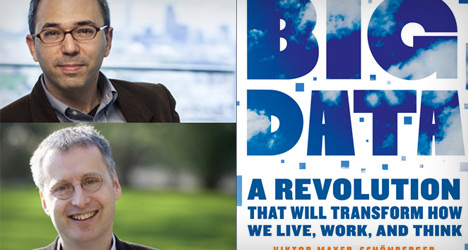
Best Business Books 2013
Our review of the year's best business books, in pictures.
Interactive
Are You Caught in the Hindrance Trap?
Do you help bring out the best in your people or do you inadvertently hold them back from superior performance? Complete this assessment to find out.

The Story of UTCʼs Success–In Pictures
How United Technologies Corporation; — owner of Pratt & Whitney, Otis Elevator, and a wide range of other businesses; — became one of the major corporate success stories of the past two decades.

Business Opportunities in the Arctic
The earth’s northernmost regions are rich in resources. The challenge will be accessing them sustainably. This slideshow is part of the article “Is the Arctic the Next Emerging Market?

The Drone Maker's Story - in Pictures
A visual history of AeroVironment’s seemingly impossible innovations since it was founded in 1971.
Trending articles
- 1.Rethinking total reward strategiesPay, incentives, and benefits haven’t significantly changed for decades, but people’s preferences have. Employee compensation needs a rethink if companies are to attract and retain talent.
- 2.10 principles of strategic leadershipHow to develop and retain leaders who can guide your organization through times of fundamental change.
- 3.How to Brand SandIn commodity-goods markets, price is usually the only differentiator. But if you can brand those goods and bundle them with services, even bricks and sand can command premium prices. Here is how to turn commodities into branded goods.
- 4.The power of feelings at workBy aligning the pursuit of business objectives with the meeting of human needs, companies can tap into powerful emotional forces in their current cultural situations.
- 5.Rebuilding Lego, Brick by BrickHow a supply chain transformation helped put the beloved toymaker back together again.


